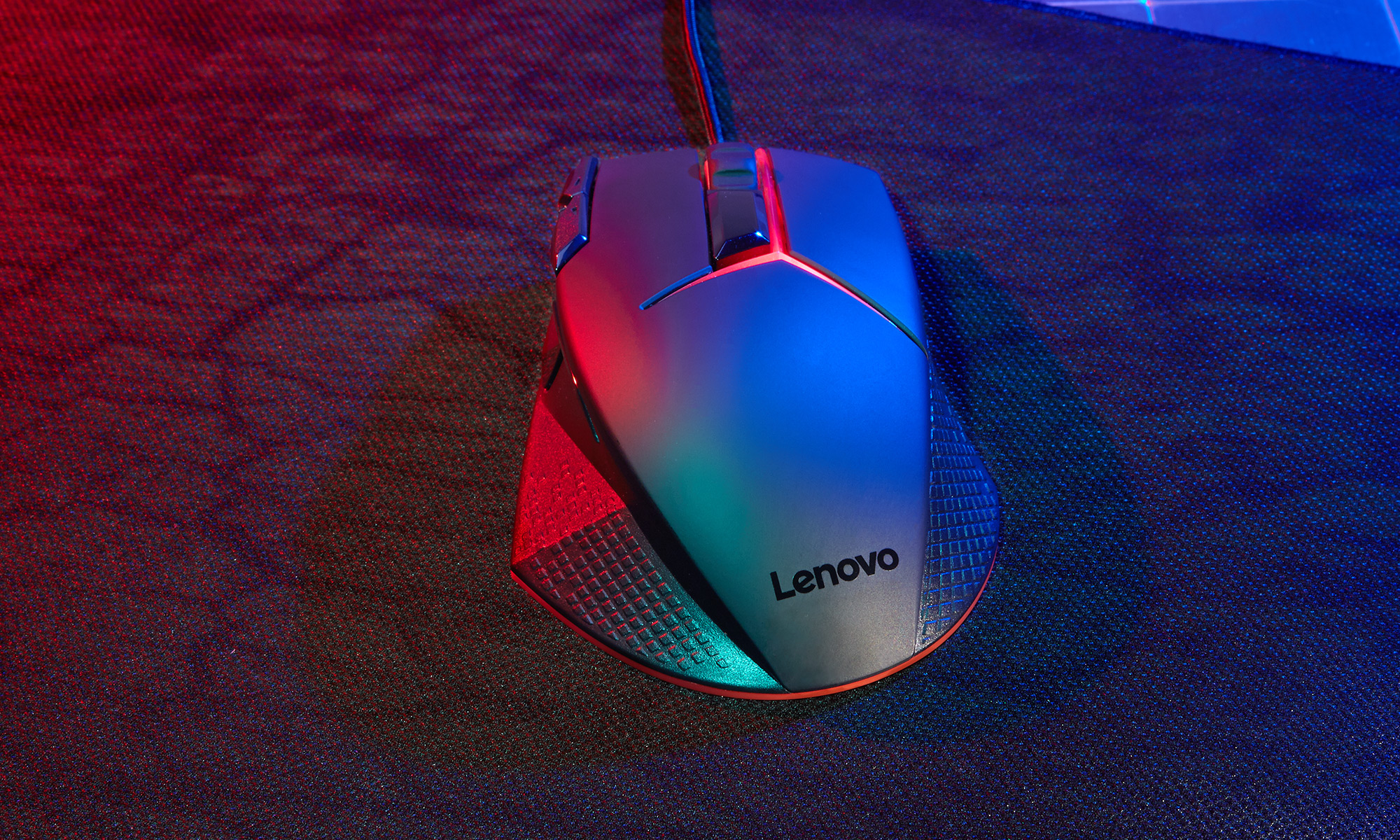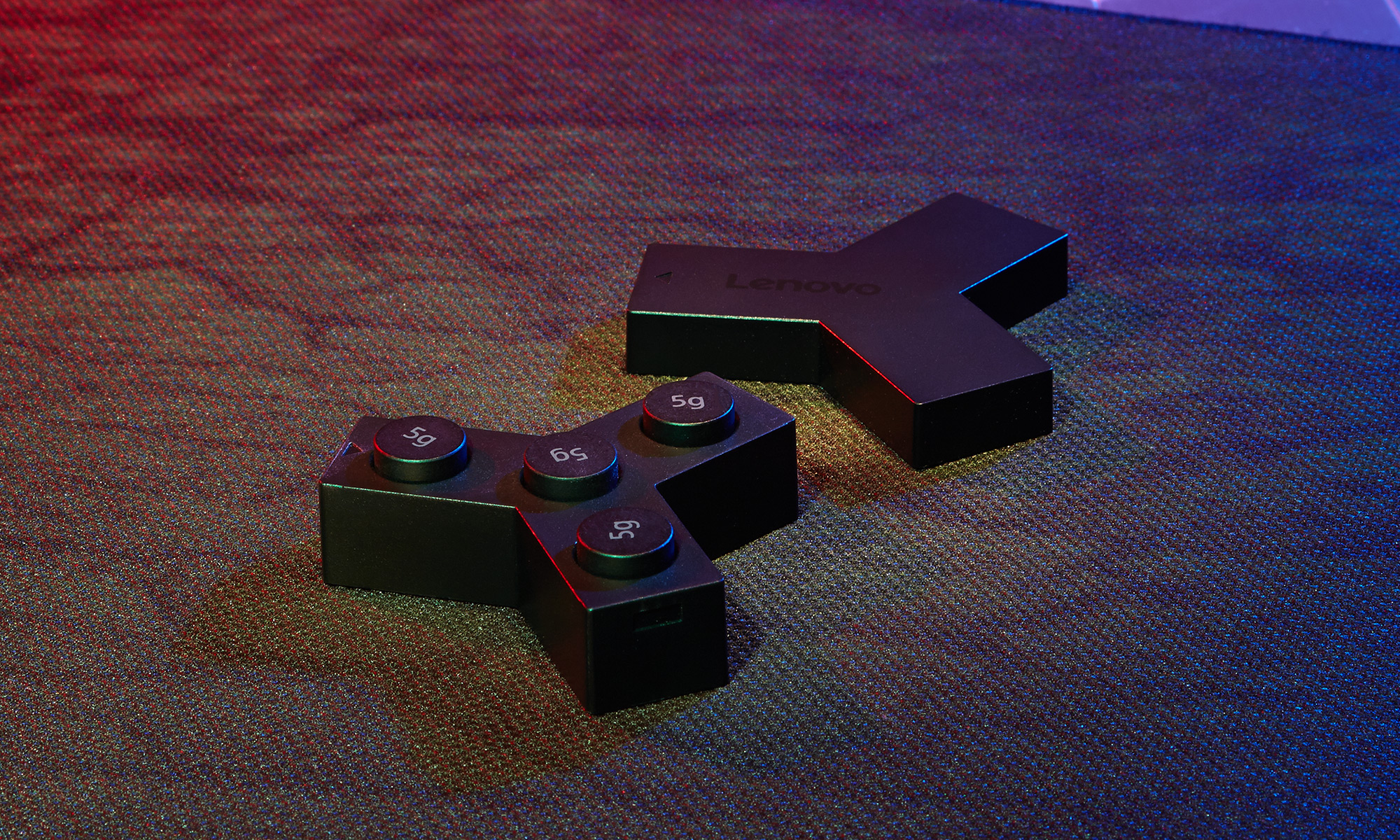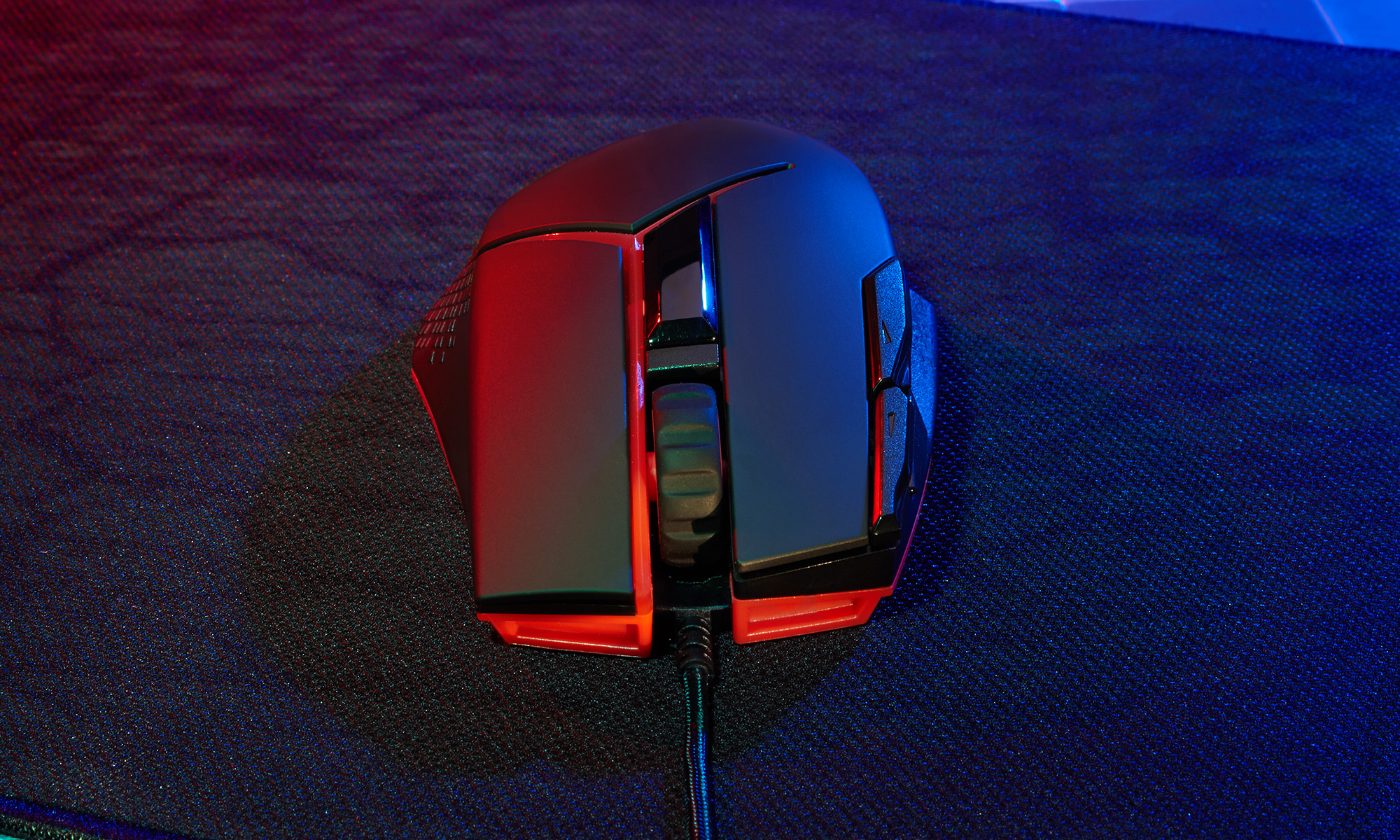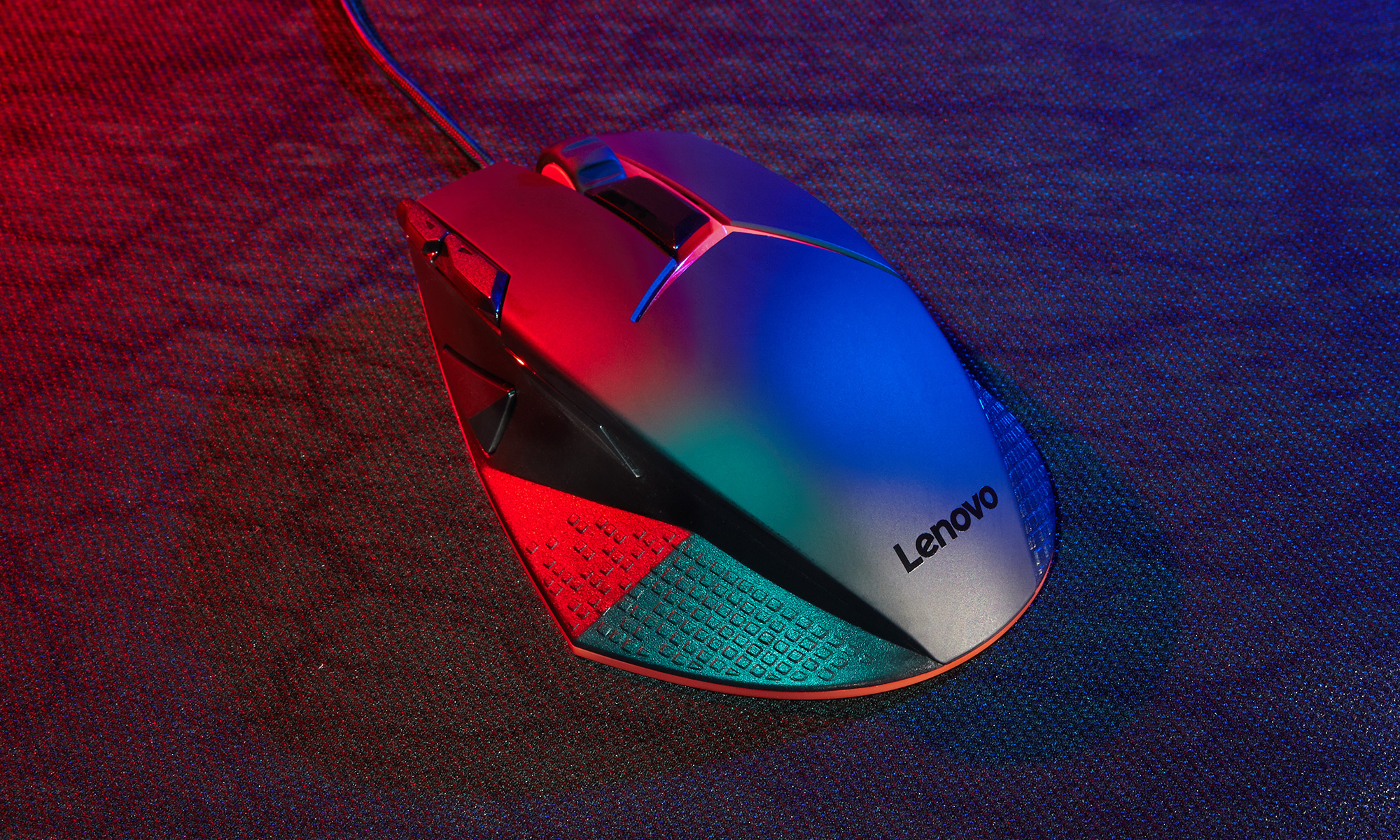Tom's Guide Verdict
With a so-so sensor and highly limited software, the Lenovo Y Gaming Precision Mouse costs too much and does too little.
Pros
- +
Adjustable weights
- +
Comfortable textured grips
Cons
- -
Clunky design
- -
Unhelpful software
- -
Inconsistent performance
- -
Uncomfortable button layout
Why you can trust Tom's Guide
If Lenovo is correct to claim that the Y Gaming Precision Mouse ($70) is a "best-in-class" gaming mouse, it's only because it’s been receiving a remedial education. This peripheral looks promising right out of the box: big and textured, with a slick red-and-black color scheme. The shine is only skin-deep, however, as the Y Gaming Precision employs a so-so sensor and highly limited software. With a $70 price tag, you could — and should — choose a much better gaming companion.
Design
The Y Gaming Precision is enormous: 5.3 x 3.3 x 1.6 inches. Compared to other all-purpose mice, like the Razer DeathAdder (5.0 x 2.8 x 1.7 inches) or the Logitech Proteus Core (5.2 x 3.0 x 1.6 inches), it is either a little or a lot bigger than the competition.
At first glance, it's quite a striking design. The mouse is both round and angular, with coarse textures for both the thumb and the two outermost fingers. With a black-and-red motif and backlighting to match, the Y Gaming Precision looks like a formidable contender — at least until you pick it up.
MORE: Best Gaming Mice
In actuality, the mouse's plastic shell feels a bit flimsy and cheap, and the mouse is so big that it's not really comfortable for anyone but the largest-handed ladies and gentlemen. Using a palm grip is fine, but you can forget about a claw grip; it's simply too big and clunky.

The button layout is also, to put it charitably, irregular. The left button and right button feel fine, but the scroll wheel is a bit too rubbery, which makes it feel somewhat cheap. Below that, the dots-per-inch (DPI) sensitivity button features lighting to let you know the DPI level — which is good. But the button goes dark a split second after you change levels, making the feature only marginally useful. There are two buttons near the upper left, and you can't use them to adjust DPI.
The Y Gaming Precision also has two thumb buttons. The first is a triangular one that on any other mouse would activate a "sniper mode" (temporarily lowered DPI for first-person shooters), but that feature is not available on the Y Gaming Precision. The second is an all-purpose thumb button, but it's long and thin, and it rests just above where the thumb sits, which feels unintuitive.

On the bright side, Lenovo's mouse also comes with four 5-gram weights, and you can adjust the heft of the mouse easily by placing them in a compartment on the peripheral's underside. Getting them in and out can be a bit sticky, but overall, it's easily one of the Y Gaming Precision's best features.
Features
A mouse may feel clunky and cheap, but these are forgivable problems if it offers a ton of useful extra features or fantastic performance. The Y Gaming Precision doesn't succeed on either count. When it comes to software, the Y Gaming Precision feels limited and archaic, when it even deigns to function at all.
The mouse's plastic shell feels a bit flimsy and cheap, and the mouse is so big that it's not really comfortable for anyone but the largest-handed.
The Y Gaming Precision Mouse runs on a piece of specialized software by the same name. Although Lenovo also produces a Y Gaming headset, there is no connectivity between the two devices, which puts Lenovo at a disadvantage compared with software like the Razer Synapse 2.0, the Logitech Gaming Software and the Roccat Swarm.

In theory, the software lets you reprogram buttons, customize DPI, control the backlighting and set up macros. In reality, the button assignments are limited to simple mouse commands and media controls. Unless you set up a macro, you cannot even assign a keyboard command to a mouse button, as is standard on almost every other gaming mouse. A gaming mouse that can't mimic keystrokes is basically just an office mouse with DPI options.
The macros themselves do work, but require following a fairly arcane set of instructions, involving a lot of different programming steps and confirmation buttons. Simply setting a thumb button to A for an attack-move command in StarCraft II, for example, is a process rather than a simple assignment.
A gaming mouse that can't mimic keystrokes is basically just an office mouse with DPI options.
Other aspects of the mouse are functional, but confusing. You can set up and name individual profiles, but you can't link them with games or other software. There are two separate menus to set DPI levels, and they seem to bear little relation to one another. To set the "breathing" effect on the backlighting (the only effect available), you have to uncheck the box.
Performance
Normally, whatever else a gaming mouse's failings may be, they at least perform well in-game. Using a high-quality sensor ensures that your hand motions will translate faithfully into game commands, regardless of how comfortable the mouse or how intuitive the software. In terms of performance, the Y Gaming Precision mouse isn't terrible, but it's also not up to the standard of what a gaming mouse should be.
I ran through Rainbow Six Siege, StarCraft II: Legacy of the Void, Batman: Arkham Knight and Star Wars: The Old Republic with the Y Gaming Precision, and the results were mixed. The Y Gaming Precision didn't distinguish itself in any category (particularly not in FPS, as the sniper button isn't a sniper button at all), and in some cases, it didn't work very well at all.
The Y Gaming Precision mouse isn't terrible, but it's also not up to the standard of what a gaming mouse should be.
Hunting down terrorists in Rainbow Six Siege worked well enough, as did commanding space armies in Legacy of the Void. However, even when I turned the DPI up, controlling the camera felt shaky and jumpy in Arkham Knight and The Old Republic. Something about the sensor feels a little sluggish and unresponsive, and while it's not a deal-breaker for single-player adventures, it's a shortcoming I've encountered in very few other mice.
MORE: Best Gaming Keyboards
Bottom Line
At best, the Y Gaming Precision is uninspired, and, at worst, it's broken. Many of its problems, as significant as they are, would be excused in a budget mouse, but not one that sells for $70. For that price, you could get the excellent Logitech Daedalus Apex or the equally excellent Razer DeathAdder Chroma. If Lenovo has a genuine desire to compete in the gaming mouse space, its next effort will have to be much stronger than its first.
Marshall Honorof is a senior editor for Tom's Guide, overseeing the site's coverage of gaming hardware and software. He comes from a science writing background, having studied paleomammalogy, biological anthropology, and the history of science and technology. After hours, you can find him practicing taekwondo or doing deep dives on classic sci-fi.


